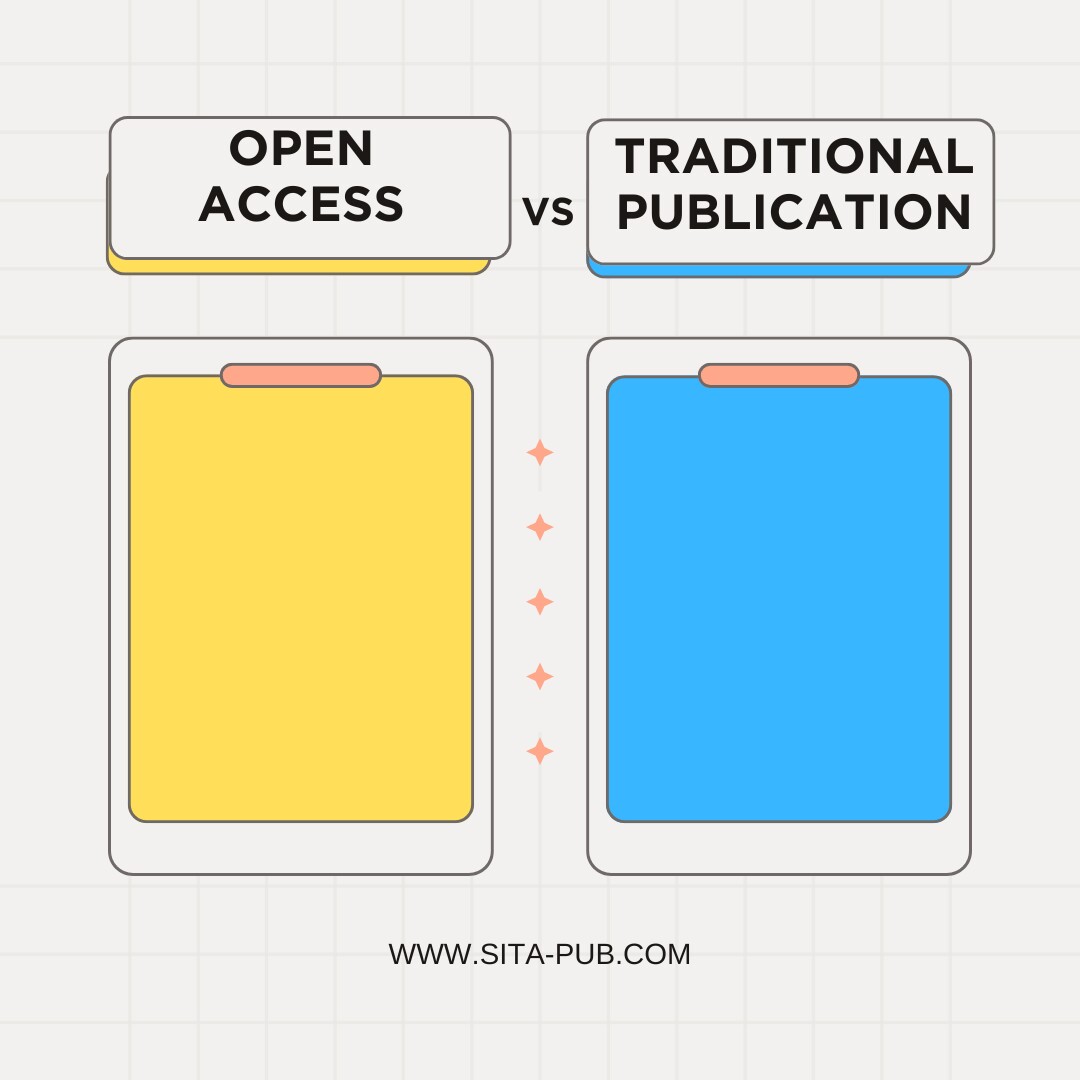Open Access vs. Traditional Publication


Academic publishing provides two primary options for publishing research: open access (OA) and traditional publishing. While both seek to share knowledge, their models, costs, and accessibility vary significantly. Understanding these differences is critical for researchers who want to maximize the impact of their work.
Open access (OA) publishing is a model that makes research articles freely available online to anyone with an internet connection. This means that readers can access the full text of the article without any subscription fees or paywalls.

The biggest advantage is that anyone can read the full text of an article without paying a dime. This removes financial barriers and allows for wider access to research.

OA articles are typically published under Creative Commons licenses. These licenses allow for the reuse and adaptation of the content, encouraging collaboration and building upon existing research. You can think of it like a "copy and share" license for research.

OA articles are more easily detectable online, potentially reaching a much wider audience. This increased visibility can lead to more citations, greater impact, and broader spreading of research findings.
Traditional publishing, also called subscription-based publishing, is the older way of publishing journals. Readers pay a fee to access the journals. This means that only those with access to a subscribing institution or library can read the full text of articles.

Readers need to subscribe to a journal or have access through a subscribing institution.

Authors typically transfer copyright to the publisher, limiting their control over the article's use.

Traditional journals often have rigorous peer review processes to ensure quality.
Feature | Open Access | Traditional Publishing |
Access | Free and unrestricted to all | Subscription-based, requiring access through a subscribing institution or library |
Cost | Authors typically pay publication fees (Article Processing Charges - APCs) | Readers pay subscription fees |
Copyright | Authors retain copyright, often under Creative Commons licensing | Authors typically transfer copyright to the publisher |
Visibility | High, as articles are easily discoverable online | Lower, as access is restricted by subscriptions |
Speed of Publication | Can be faster, as there are no traditional publishing timelines | Can be slower due to established publishing processes |
Prestige | Growing in prestige, with many high-impact journals offering OA options | Traditionally associated with higher prestige, but this is changing |
Increased Visibility and Impact: OA articles are more easily detectable, reaching a wider audience and potentially generating more citations.
Global Accessibility: Researchers and students in resource-limited settings can access cutting-edge research.
Openness and Collaboration: OA promotes collaboration and reuse of research, fostering innovation.
Rigorous Peer Review: Traditional journals often have established peer review processes, ensuring high-quality research.
Prestige and Reputation: Some researchers and institutions still associate traditional publishing with higher prestige.
Established Infrastructure: Traditional publishers have well-established systems for managing the publication process.

The decision of whether to publish open access or traditionally depends on several factors:
Research Area: Some fields have a stronger tradition of open access publishing.
Funding Availability: OA publication fees can be significant, but some funding sources support OA publishing.
Personal Preferences: Some researchers prioritize open access, while others value the prestige of traditional journals.
SITA Academy understands how academic publishing is changing and offers help with both open access and traditional publishing. We have the list of open access and close access journals and we can assist you in deciding the best fit for your research. We also teach you how to use Scopus, a large database of research papers, to ensure that your work reaches a larger audience.
We offer personalized services to help you publish your journal articles effectively and meet high standards. Here's what we can do:
Journal Selection:
We help you find the best journals for your research, considering things like the journal's focus, audience, and how important it is.
Manuscript Editing:
Our professional editors improve your writing. They will make it clear, concise, and follow the rules of the journal you're aiming for.
Formatting Assistance:
We make sure your manuscript looks right for the journal, including things like how to cite sources and other technical details.
Publication Support Services:
We will submit your work, contact with journal, and get your manuscript ready for publication.
Scopus Expertise:
We will make your research seen by more people in Scopus, by explaining the important metrics and how to make your work stand out.
SITA Academy specializes in helping researchers in the social sciences. We know the specific requirements and trends in this field. Our team is very familiar with the different citation styles, ensuring your work meets the highest academic standards.
We know how difficult it can be to navigate the publishing process. We're committed to giving you the support you need to achieve your publishing goals.
If you have any questions, inquiries, or would like to learn more about our services, please don't hesitate to reach out to us. Our dedicated team is ready to assist you.